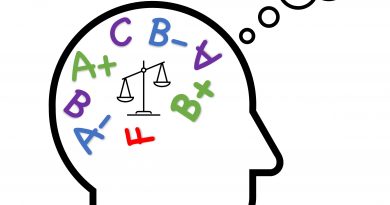There are no quick fixes in JEDI work
Over the past year, I was inspired by so many faculty members working tirelessly in service of their students and trying new ideas to create more equitable courses. As the summer comes to a close, I hope everyone was able to get what they needed to feel rejuvenated, energized, and personally fulfilled. But as we turn to a new academic year filled with uncertainties, I hope we can continue efforts to build a more equitable Tufts. To make progress, these efforts must be on-going. There are no quick fixes to envisioning and building a campus and classrooms that center the principles of Justice, Equity, Diversity, and Inclusion (JEDI).
In this post, I want to spend some time reflecting upon what this means for our teaching. In teaching, our work to create a course based upon the principles of JEDI must begin with continuous and rigorous self-reflection. I am often asked by faculty members for suggestions for new strategies and tips to be more inclusive in their teaching. While it is never a bad idea to learn ways to improve your pedagogy, the implementation of these strategies must be tied to self-reflection and developing an informed and thoughtful perspective about identity, power, and privilege, and your own identity that grounds your classroom practices. What do I mean by this? I mean that instructors need to rigorously interrogate their own identities, assumptions, and biases, and understand the way power shapes dynamics in the classroom. Without this, our learned strategies will never reach their full, intended outcomes and in fact, may lead to the further marginalization of students (Park et al, 2019.) Below I have put together a list of a few prompts, designed to support you in this work. You might consider keeping a journal where you can capture your learning, and / or creating a group that meets to work through these questions.
1. What are your social identities? What does it mean to hold these identities?
This may seem basic and many of you have probably spent some time thinking about this, but it is the starting point to begin your process of rigorous self-reflection. However, I encourage you to think about your full and intersecting identities such as race, ethnicity, gender identity, ability, religion, national origin, or other identity systems categories. Consider the following:
- What identities have been most salient for you? Why?
- What identities have you not spent significant time thinking about? Why?
This prompt is intended for you to notice trends and differences across social categories, and encourage you to think about where you might occupy positions of power and privilege.
2. How do your identities and experiences influence what you teach?
This question asks you to explore your various social identities in relation to your path to becoming an instructor. Reflecting on this prompt should provide you with a sense of the larger systemic influences that shaped your path, including where you benefitted and where you may have faced challenges. To help with this, consider the following:
- What have been your successes and obstacles, and how they may be related to your identity?
- How might your journey be similar to and different from that of your students and why?
These prompts are designed to have you think about various advantages and disadvantages you may have had such as access to capital and networking, and how these unearned factors may have impacted your professional success.
3. How do your social identities and experiences influence how you teach?
There are two significant parts to this question. The first asks you to think about how students perceive and relate to you. For some students, your identity may challenge their assumptions about who is a faculty member in the field, while for others, it may reify these assumptions. This can shape the ways students interact with you, including their behavior and expectations they have of you.
The second part of the question is most relevant for instructors teaching courses that discuss race, identity, or other related topics. For some, your identity is inextricably linked to the content. In this context, consider how students perceive you in relation to the course material. Others of you may share privileged identities in relation to your course content. For example, if you are a White, cis-gendered male, what does it mean for you to teach about the genocide of Indigenous communities in the Americas? In this case, consider the following:
- What knowledge can you access?
- What knowledge can you not access?
- How does your identity shape the way you present course material?
I am not suggesting in this example the faculty member shouldn’t teach this course. However, it is important to think about your own experiential knowledge in relation to the content, especially about what forms of knowledge you have, what you lack, and an understanding of the knowledge students bring to bear in the course.
4. How have your discipline’s history and pedagogies been shaped by racism and other systems of oppression?
This is a difficult question for many faculty members to answer. I encourage you to spend some time researching this question if this information is not readily known to you. Inequities in higher education (and other institutions) did not emerge suddenly or recently. They are embedded in logics and epistemologies that have valued elite, western, White ways of knowing while denigrating others (Patton, 2016). Many of these logistics continue to this day. As such it is important to question many of the assumptions embedded in your discipline. For example,
- What type of knowledge is valued?
- Whose knowledge is valued?
- Who has been allowed to participate in this discipline?
- Who has benefitted from research in your field? Who has not benefitted?
If you want to truly center JEDI work, understanding our discipline’s legacy and practices that proliferate various forms of oppression is essential. This is the only way to uproot these systems.
These are difficult prompts and require significant thought. They require ongoing reflection, continuous learning, and conversations with colleagues. I know some of you are likely reading these prompts and may feel overwhelmed and confused. I encourage you to begin little by little with these prompts. You cannot do this at once. This is long-term and ongoing work. It is likely that your responses to these questions will continue to change over time, so these prompts are important no matter where you are in your own development. Continuing to reflect upon them is essential to make meaningful changes in your teaching, grounded in a deep understanding of your own philosophy and the history of racism.
In what ways are you envisioning and building a campus and classrooms that center the principles of Justice, Equity, Diversity, and Inclusion (JEDI)? Share your stories by emailing us at celt@tufts.edu.
Additional Resources
- Kirk, G., & Okazawa-Rey, M. (2006). Identities and social locations: who am I? Who are my people?. American identities: An introductory textbook, 9-15.
- Park, J. J., Kim, Y. K., Salazar, C., & Hayes, S. (2019). Student–faculty interaction and discrimination from faculty in STEM: The link with retention. Research in Higher Education, 1-27.
- Patton, L. D. (2016). Disrupting postsecondary prose: Toward a critical race theory of higher education. Urban Education, 51(3), 315-342.
- Social Identity Wheel Activity
- What are White Normative Standards in Postsecondary Education?
This is part 3 in a series to explore how many of our assumptions about learning and teaching have been challenged in the past year and a half, and required (and continue to require) us to change. We became more aware of how our identities and lived experiences shape the way we teach, and how that impacts marginalized students. This post addresses the challenge of doing the personal work required to be able to make authentic, thoughtful changes toward equity and justice in our teaching. To read other articles in the series, start with the introduction: Have We Been Transformed & How




